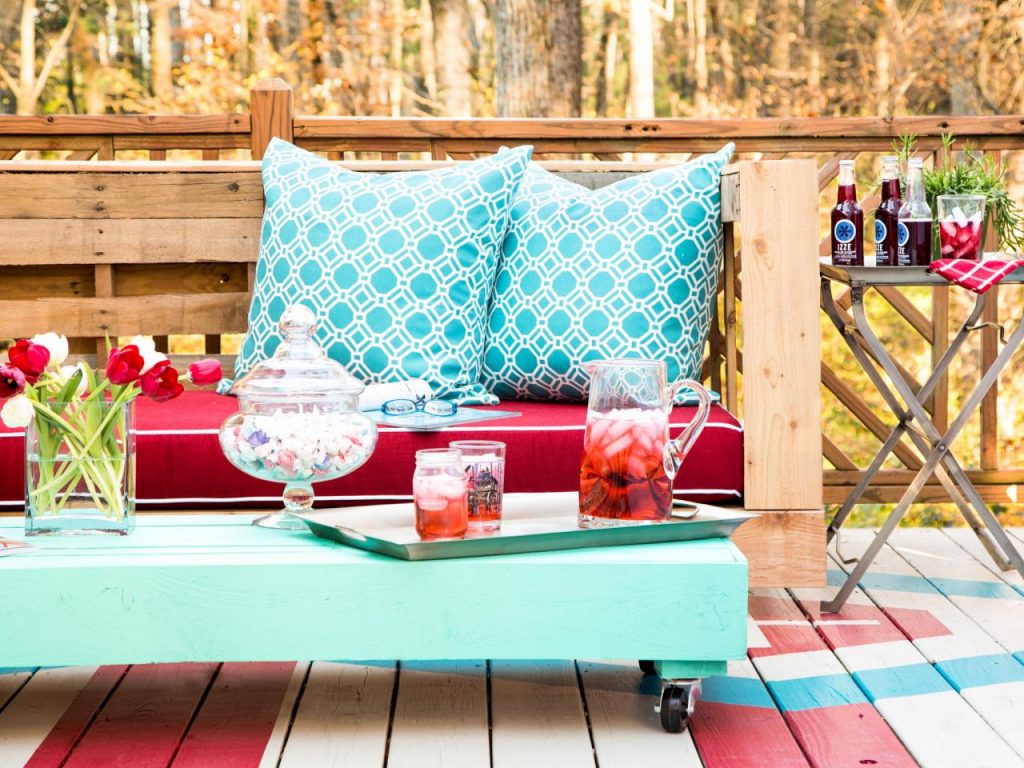Plantes de Thunbergia - Apprenez à Soigner les Vignes de Suzanne aux Yeux Noirs
Les thunbergias sont des plantes uniques. Les jardiniers qui décident de cultiver une telle plante doivent se rappeler qu'il s'agit d'une vigne qui pousse exceptionnellement bien sur les balcons et près des patios. Cette plante est devenue très populaire car elle est facile à cultiver. Lorsqu'elle fleurit, elle étonne par ses fleurs de couleur orange intense. Comment prendre soin de la vigne black eyed Susan et des autres plantes thunbergia ? Peut-on les protéger des maladies et des parasites ? Découvrez-le.
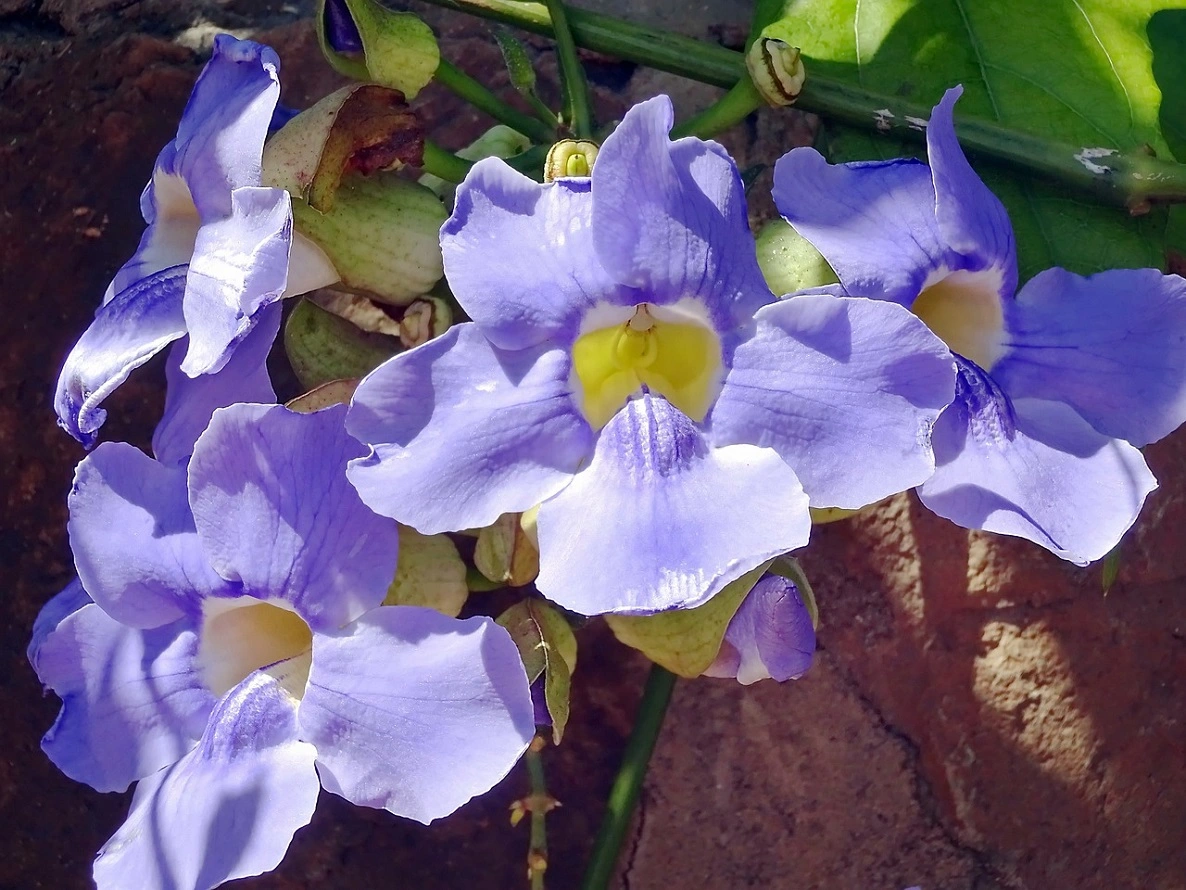
Thunbergia - origine et caractéristiques
La vigne Black eyed Susan, également connue sous le nom de Thunbergia alata est une plante de la famille des Acanthaceae. Quant à son habitat naturel, il provient des régions du sud-est de l’Afrique. Son nom latin provient du nom d’un botaniste suédois - Carl Peter Thunberg. En raison du climat dans lequel elle pousse à l’origine, la vigne est une annuelle dans les régions froides. Dans les pays chauds, la plante peut être cultivée sur plusieurs années, car c’est une plante vivace dans son habitat naturel.
Les thunbergias ont des branches fines et assez délicates qui grimpent autour des tuteurs sur lesquels elles poussent. Grâce à cela, la plante a un support et peut atteindre 3 m de haut. La vigne développe typiquement des feuilles en forme de cœur qui ont une couleur verte intense caractéristique - tout comme les tiges. Les feuilles ont une longueur d’environ 7-8 cm (2,7-3,1 in).
La couleur des pétales de la fleur dépend de la variété particulière de thunbergia. Les variétés jaunes (par exemple, la vigne Susan aux yeux noirs), orange (par exemple, Thunbergia gregorii) et crème sont les plus populaires. Certains cultivars n’ont pas une couleur uniforme de leurs fleurs. Ce sont les plus prisés des jardiniers.
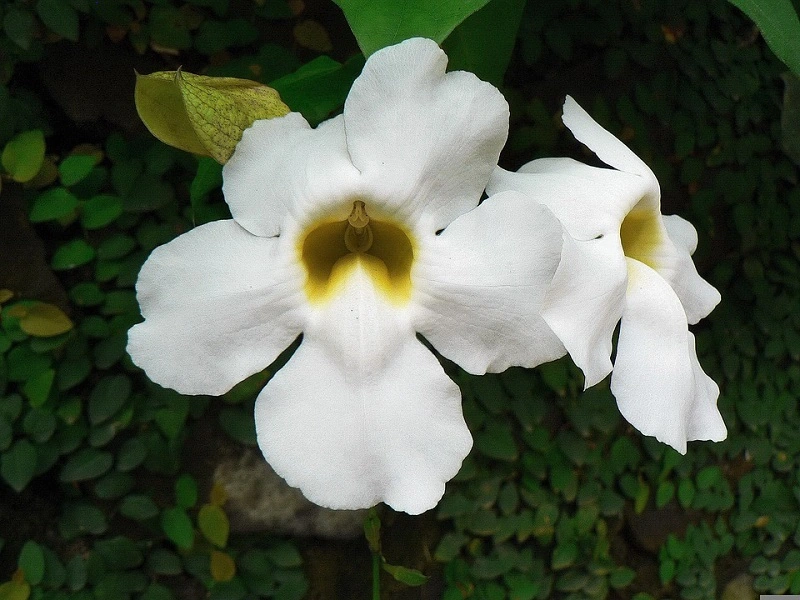
Thunbergia alata - les cultivars les plus populaires
La Thunbergia alata est devenue très populaire grâce à sa longue période de floraison. On peut utiliser cette plante grimpante pour obtenir des effets spectaculaires. Les cultivars les plus courants aimés par les jardiniers comprennent :
- Coucher de soleil africain,
- Sunrise.
Les cultivars particuliers ont des couleurs de fleurs distinctes, différentes de celles de la variété de base. Un thunbergia alata de base développe des fleurs de couleurs unies. Africa Sunset fleurit avec d’étonnantes fleurs rouge saumon-crème. L’autre cultivar populaire, Sunrise, a une floraison rouge-orange.
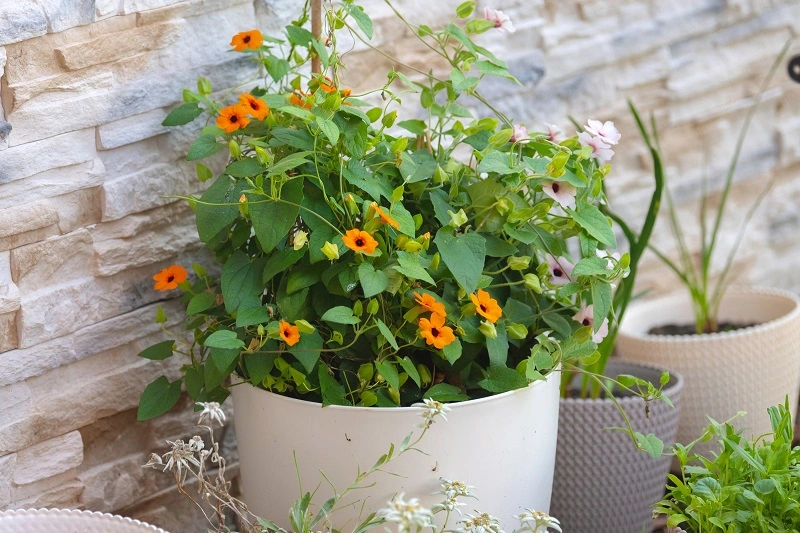
Thunbergia - culture et besoins
Le Thunbergia alata nécessite des conditions de culture optimales. Il préfère les endroits bien exposés au soleil, qui garantissent une chaleur suffisante. L’emplacement de cette plante dans la cour ne doit pas être trop ouvert. La plante a besoin d’être protégée des rafales de vent, en raison de ses tiges délicates.
La plante doit être plantée au printemps dans de nouveaux pots avec de la terre fraîche, ou directement dans le sol, mais veillez à le faire lorsqu’il n’y a plus de gelées ou lorsque les températures extérieures dépassent 10-15°C (50-59°F).
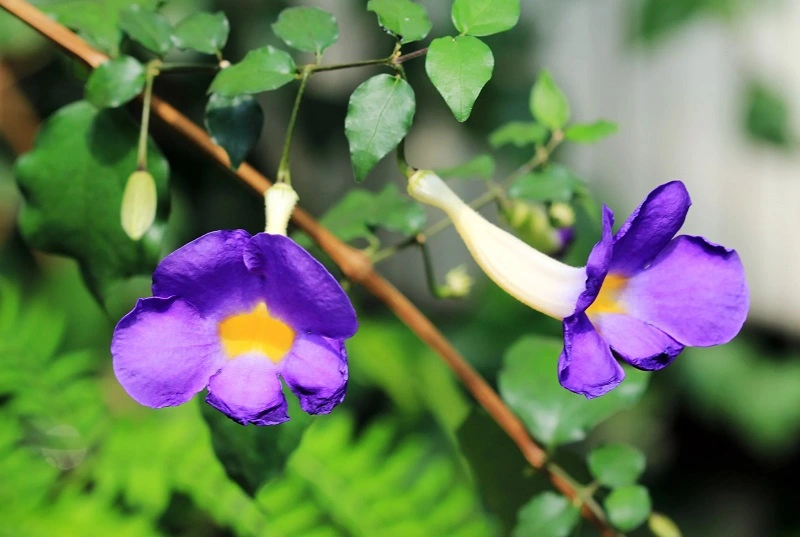
Le thunbergia grandiflora a-t-il besoin d’un arrosage régulier ?
Les plantes de thunbergia ont besoin d’un arrosage régulier, surtout pendant leur période de floraison. Sans suffisamment d’eau, les feuilles de la plante, mais aussi les fleurs, se fanent. Si vous laissez un thunbergia atteindre cet état, le fait de l’arroser à nouveau correctement ne lui rendra pas sa santé.
Le Thunbergia a besoin d’un sol toujours humide. C’est particulièrement crucial pendant les journées chaudes. Dans ce cas, veillez à arroser la plante même deux fois par jour.
Thunbergia alata - comment fertiliser la plante ?
La vigne Black Eyed Susan nécessite une fertilisation régulière. Veillez à prendre soin de cet aspect surtout au printemps et en été. La plante doit être fertilisée tous les 7 ou 14 jours pour lui fournir suffisamment de nutriments nécessaires à sa croissance et à sa floraison. Vous pouvez utiliser un engrais liquide universel. Les produits conçus pour les plantes à fleurs sont parfaits à cet effet, et peuvent être achetés dans la majorité des magasins de jardinage.
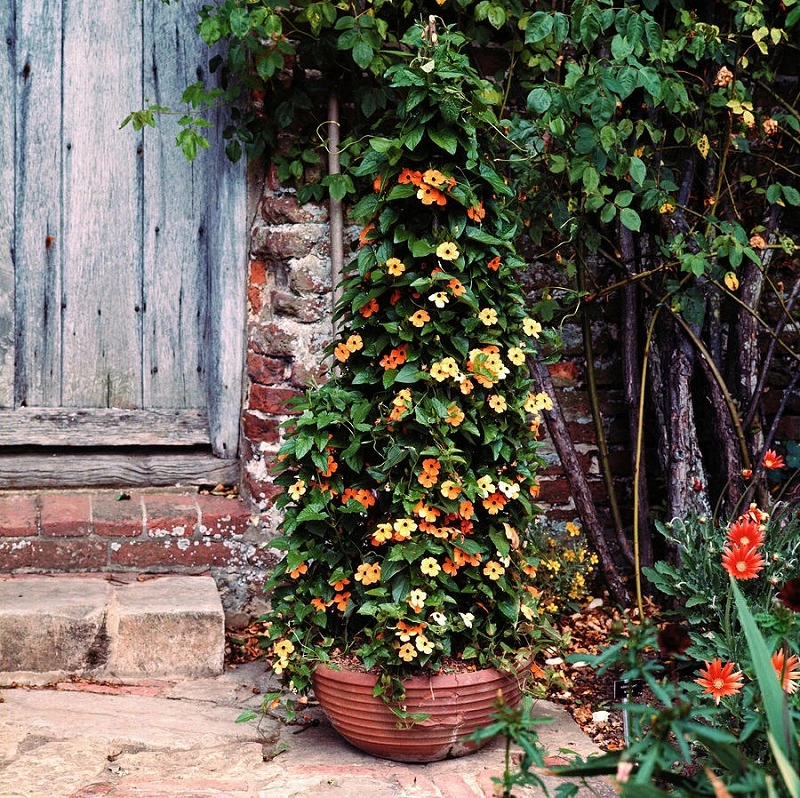
Comment multiplier les plantes de thunbergia ?
La plante peut être multipliée par multiplication générative, c’est-à-dire en utilisant ses graines. Après les avoir récupérées sur la plante, vous pouvez mettre 2-3 graines dans un seul pot. Prévoyez de semer les plants de thunbergia au début du mois de mars, lorsque les températures sont beaucoup plus élevées. Placez les pots préparés sur un rebord de fenêtre, en veillant à ce que la température moyenne soit d’environ 20°C (68°F).
Les premières plantules peuvent être observées après 2-3 semaines. Lorsqu’ils atteignent environ 10 cm (4 in), transplantez-les dans des récipients séparés. Vous pouvez également tailler leurs sommets pour les encourager à développer davantage de branches.
Si vous voulez planter le thunbergia en pleine terre, transférez-le d’un conteneur à la fin du mois de mai et au début du mois de juin.
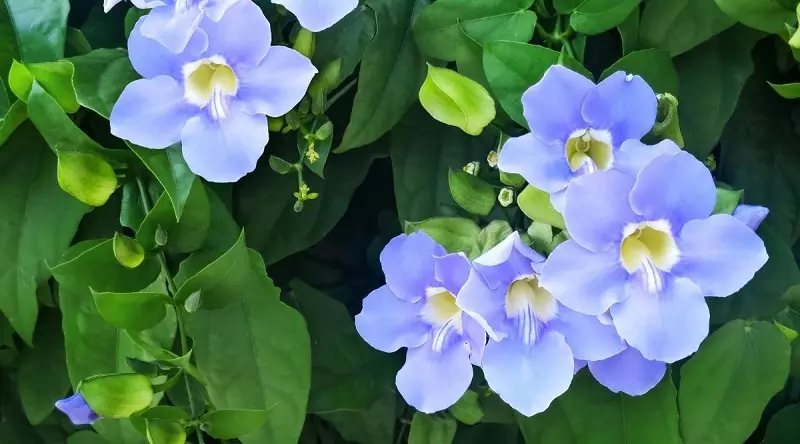
Quels sont les ravageurs et les maladies qui peuvent affecter les plantes de thunbergia ?
Les feuilles et les tiges de la plante sont souvent attaquées par des pucerons. Il n’est pas difficile de s’en débarrasser ; il suffit d’utiliser un produit adéquat, que l’on peut acheter dans n’importe quel magasin de jardinage.
Les champignons sont la seule menace potentielle - ils peuvent apparaître si le sol n’est pas assez perméable, après que la plante ait reçu plus d’eau que nécessaire. Un arrosage insuffisant peut également provoquer le flétrissement des fleurs et des feuilles.
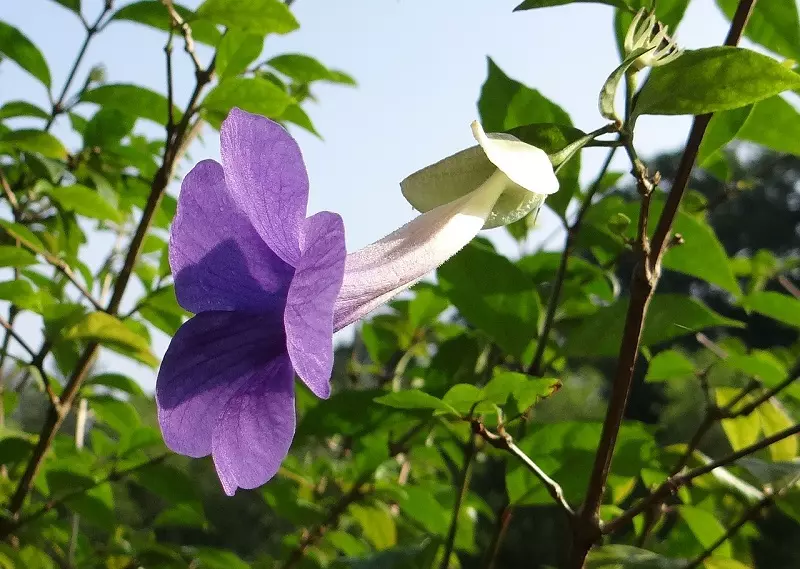
📍 Quand planter le thunbergia ?
Le Thunbergia peut être planté à partir de graines. Février et mars sont les meilleures périodes pour les semer. Les graines doivent être placées dans des récipients (3 graines par pot), et placées dans un endroit chaud. Une serre ou une pièce chaude est le meilleur endroit pour faire pousser les semis.
📍 Où acheter du thunbergia ?
Le thunbergia est une plante populaire, grâce à laquelle il est facilement disponible. Les graines de la vigne Susan aux yeux noirs ou thunbergia grandiflora se trouvent dans pratiquement tous les magasins de jardinage. Vous pouvez également les rechercher dans les magasins de fleurs sur Internet.
📍 Comment cultiver les plantes de thunbergia ?
Cette plante n'est pas difficile à cultiver, il suffit de respecter quelques règles importantes pour profiter d'une floraison abondante. Les espèces de Thunbergia préfèrent les endroits chauds et ensoleillés. Évitez de les placer dans des endroits exposés aux courants d'air. La plante n'aime pas les rafales de vent.
📍 Comment prendre soin des thunbergia ?
Placer la plante dans un bon emplacement est l'aspect le plus important de son entretien. Le Thunbergia préfère les sols riches et perméables. Il nécessite un arrosage supplémentaire au printemps et en été. Il est recommandé de le nourrir avec des engrais pour renforcer la plante.
Articles de fond




